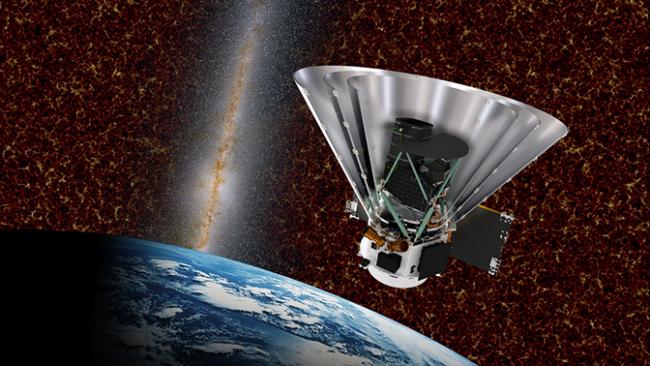SPHEREx
Clues about the origin of the universe and of life are scattered across the sky. SPHEREx (Spectro-Photometer for the History of the Universe, Epoch of Reionization, and Ices Explorer) is a NASA medium-class Explorer (MIDEx) designed to measure optical-to-infrared spectra of hundreds of millions of galaxies and millions of Milky Way stars. With its unprecedented galaxy catalog, SPHEREx will answer pressing questions about the history and origin of the universe. Its unique catalog of Milky Way stellar spectra will reveal the abundances of water and other molecules associated with life in the Milky Way in unprecedented detail. Researchers from the Center for Astrophysics | Harvard & Smithsonian, including Gary Melnick, Matthew Ashby, Joseph Hora, and Volker Tolls, are involved in the SPHEREx investigation in order to better characterize the distributions of these molecules throughout the Galaxy and better answer complex questions about their origins.
SPHEREx launched successfully on March 11 and has been conducting the first of its four planned all-sky surveys since nominal operations began on May 1, 2025. Calibrated images are being publicly released soon after they are obtained, and are available at the link below.

This artist's impression of SPHEREx shows the spacecraft as it will appear when in low-Earth orbit. During its 27-month nominal mission, SPHEREx will conduct four all-sky surveys to study the early history of the cosmos and search for interstellar molecules such as water and other compounds thought to be precursors of life as we know it. Credit: NASA/JPL
The Telescope and the Science
Astronomy typically is carried out in two basic ways: broad surveys designed to study as much of the sky as possible, and targeted observations. SPHEREx falls in the first category: it will map the entire sky in optical-infrared light four times during its 27 month nominal mission. Its scientific mission has three parts:
Map the positions of 450 million galaxies in three dimensions, to look for signs of cosmic inflation. According to the theory of inflation, the universe expanded extremely rapidly during the first fraction of a second after the Big Bang. This expansion may have produced ripples in the density of the matter that formed the first galaxies, which SPHEREx could observe.
When the first stars, galaxies, and black holes formed, they “reionized” the gas in the universe: stripping electrons from atoms. SPHEREx will study this epoch of cosmic history to understand the earliest galaxies, and how they evolved over billions of years.
Construct a detailed spectral map of the Milky Way. The CfA's SPHEREx team, led by Gary Melnick, are carrying out a program to measure the chemical compositions of newly forming star systems of diverse types. SPHEREx will identify and locate molecules important for the origins of life as we know it: water, carbon dioxide, methanol, and carbon monoxide, in those star forming systems throughout the Milky Way.
As a space telescope, SPHEREx will have a mostly unimpeded view of the sky, not limited to one hemisphere or by weather and other problems created by the atmosphere. That makes the observatory complementary to the other next-generation telescopes, including NASA's James Webb Space Telescope (JWST) and the ground-based Giant Magellan Telescope (GMT). These observatories will be valuable for following up on interesting sources identified by SPHEREx.
The mission is designed to have no moving parts, for reliability. The scientific instrument on SPHEREx is a spectrophotometer, which measures both the spectrum of light emitted by a source and the quantity of light at each wavelength. The telescope will cover successive small patches of the sky, obtaining about 14 billion separate spectral measurements on each of its four surveys as it builds up complete coverage of the entire sky every six months of the mission.
The SPHEREx collaboration is led by researchers at Caltech and NASA’s Jet Propulsion Laboratory. In addition to CfA, other project collaborators are at the University of California Irvine, Ohio State University, Arizona State University, the Rochester Institute of Technology, Stanford University, Argonne National Laboratory, and Johns Hopkins University.